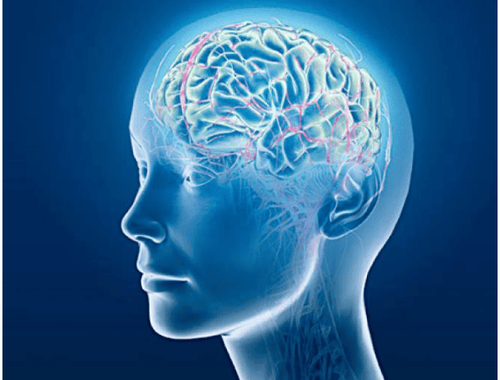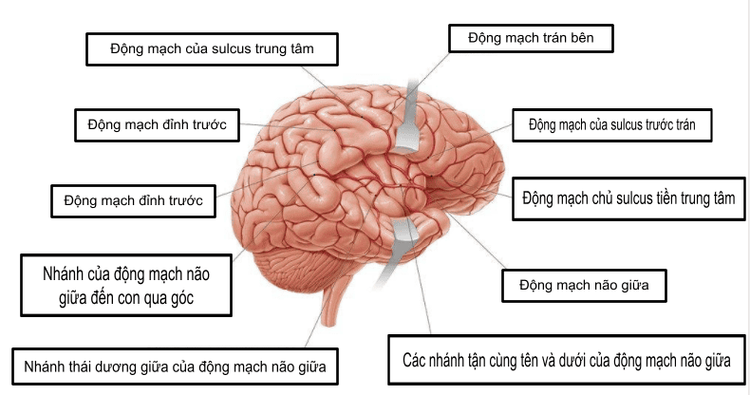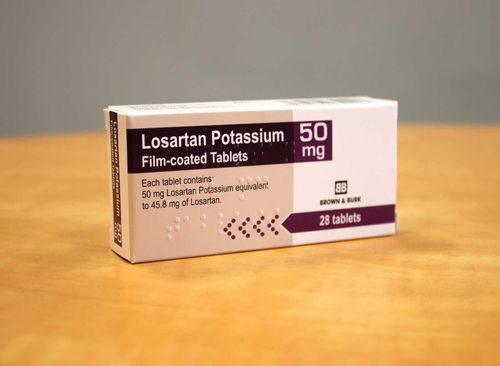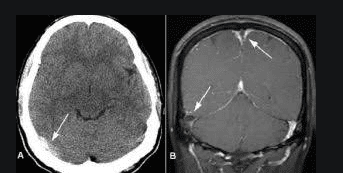This is an automatically translated article.
The middle cerebral artery (MCA) is a terminal branch of the internal carotid artery and is part of the anterior cerebral circulation. The middle cerebral artery supplies many deep brain structures, most of the lateral surface of the cerebral hemispheres and the temporal poles of the brain. This article will discuss the anatomy, function, and diagrams of the middle cerebral artery.1. Anatomy of the middle cerebral artery
The middle cerebral artery (MCA) is a terminal branch of the internal carotid artery and is part of the anterior cerebral circulation. The middle cerebral artery supplies many deep brain structures, most of the lateral surface of the cerebral hemispheres and the temporal poles of the brain. The middle cerebral artery passes from the base of the brain through the lateral sulcus (of Sylvius), before ending on the lateral surface of the brain. The surgical classification divides the middle cerebral artery into 4 segments (M1-M4), creating a total of 10 branches. The middle cerebral artery arises in the foramen, from the internal carotid artery from the lateral angle of the circle of Willis. It lies horizontally between the frontal and temporal lobes, passing through the Sylvian fissure. It then passes through the posterosuperior surface of the insula, where it bisects the tall and low body. These trunks travel together through the Sylvian fissure toward the lateral surface of the brain.Divide the middle cerebral artery into four segments to better define its path including:
The M1 segment (spherical/transverse) moves in a quasi-horizontal fashion from the internal carotid to the cerebral artery bifurcation between the temporal lobes and the frontal lobes. It lies within the spherical portion of the Sylvian fissure, through which it approaches the intersection of the spherical and spherical segments of the Sylvian fissure. At the termination of the M1 segment, the trunks of the middle cerebral artery rotate 90° posteriorly, delineating the limb ("knee" latitude) of the middle cerebral artery. Here, the middle cerebral artery divides into the superior trunk and the lower trunk. The M2 segment (introductory) begins at the bifurcation of the middle cerebral artery and includes a higher and lower trunk. This segment begins with the middle cerebral artery limb at the level of the lime and then moves along the surface of the lime. It ends at the round sulcus level of the insula. The M3 (visual) segment begins to ascend from the circular diameter of the IOP toward the surface of the brain. This segment directs through the inner surfaces of the parietal and temporal portions of the ciliary body. The M4 segment (terminal, cortical) continues into the M3 segment as it emerges through the lateral fissure to reach the surface of the brain and travels across the surface of the cerebral hemispheres.

Động mạch não giữa được chia thành bốn đoạn giúp xác định rõ hơn đường đi của nó
Many central branches arise from the middle cerebral artery as it enters the Sylvian fissure. They are also known as the striated or lateral arteries, and their main function is to supply the deep structures of the brain.
The cortical branches divide away from the middle cerebral artery as it emerges to the surface of the brain. The main function of the cortical branches is to provide most of the lateral surface of the brain, i.e. the orbital, frontal, parietal and temporal portions of the cerebral cortex.
Central branch The central branches of the middle cerebral artery arise in the Sylvian fissure, from segments M1 and M2 of the middle cerebral artery. All of them are collectively referred to as the lateral striatum (lenticulostriate).
The lateral calcified arteries penetrate the floor of the Sylvian fissure and extend to the outer surface of the thalamus. They provide the basal ganglia, i.e. striatum, most of the head and body of the caudate nucleus, and large parts of the lenticular identity and of the outer and inner capsule.
Cortical branches The cortical branches of the middle cerebral artery arise from all its segments. They gradually increase in size, with those originating from the M1 being the shortest, while those originating from the M4 being the longest. It is noteworthy that cortical branches that arise before the dichotomy of the MCA are often referred to as primary central branches for the sake of neuroanatomical differentiation.
The cortical branches are named after the brain region they supply;
The anterior temporal arteries vascularize the temporal pole of the brain, which is the anterior part of the temporal lobe. They arise from the M1 segment of the middle cerebral artery. The lateral frontal artery supplies the lateral portion of the orbital surface of the frontal lobe, as does the inferior anterior ileum. It arises from the M2 segment of the middle cerebral artery. The remainder of the cortical branches arise from the M4 segment of the middle cerebral artery;
The artery of the prefrontal sulcus provides anterior aspects of the inferior and medial frontal gyrus. The artery of the central anterior sulcus moves in the anterior central sulcus to supply the posterior aspect of the lower and middle frontal gyrus, Broca's area, and the central anterior gyrus, which house the main motor cortex for the head and upper extremities. and body. Arteries of the central sulcus migrate within the central sulcus and contribute to blood supply to the anterior and posterior central gyrus contains the primary somatosensory cortex for the head, upper limbs, and trunk. A series of parietal branches provide the lateral aspect of the parietal lobe, including the superior and inferior lobes. The angular artery supplies the superior and angular gyri of the parietal lobe, the posterior portion of the superior temporal gyrus, and the superior portion of the lateral surface of the occipital lobe. The medial temporal branches provide the medial aspect of the superior and medial temporal gyrus, as well as the primary auditory cortex and Wernicke's area. Variations of Anatomy
The middle cerebral artery may vary in origin of the medial temporal gyrus. it. A duplicated middle cerebral artery is seen in less than 3% of people but will be seen arising from the internal carotid artery, which parallels the main middle cerebral artery and travels toward the anterior temporal lobe to supply it.
Up to 4% of people have an accessory middle cerebral artery that normally supplies the anterior orbital region of the brain. It may be seen to arise from the internal carotid artery (Type 1), the forebrain A1 segment (Type 2), or the forebrain A2 segment (Type 3).

Trong một cơn đột quỵ não cấp, động mạch não giữa là động mạch thường bị tắc nghẽn
2. Middle cerebral artery function
Of the three large arteries that perfuse blood to the brain, the middle cerebral artery (MCA) is the largest. The middle cerebral artery begins to branch in the internal carotid artery. It transports blood to the lateral regions of the frontal, temporal, and parietal lobes. The frontal, temporal, and parietal lobes are involved in controlling the sensory functions of the arms, throat, hands, and face.The parts of the middle cerebral artery are:
The transverse segment: "enters" the brain tissue by branches and is called the lateral artery. The job of this segment is to supply blood to the basal ganglia. The basal ganglia are vast clusters of nerve cells, also known as neurons, responsible for involuntary movements. Sylvian segment: This segment supplies blood to the temporal lobes and cerebral cortex. The temporal lobe is directly involved in sound processing. The cerebral cortex is responsible for regulating some motor functions and helping to pair emotions with experiences. The branches of the Sylvian segment can bifurcate (split into two) or branch (split into triplets) into separate clades. This brain region also contains the cerebral cortex, a covering of the brain, extending from the envelope in the direction of the cortex, the outer layer of the brain. The Sylvian segment is sometimes separated into the ocular segment and the intraocular segment. Cortical segments: Supply blood to the body's cerebral cortex. During an acute stroke, the middle cerebral artery is the artery that is usually blocked. Neuroimaging tools, such as a CT Scanner, are diagnostic tests commonly used to identify a stroke. Doctors look for acute middle cerebral venous thrombosis — a blood clot in a vessel — because this is a very good sign of thrombus, middle cerebral artery occlusion caused by a blood clot. or particles that come from elsewhere.
3. Diagram of middle cerebral artery

Sơ đồ cấu trúc và vị trí của động mạch não giữa
Please dial HOTLINE for more information or register for an appointment HERE. Download MyVinmec app to make appointments faster and to manage your bookings easily.
Reference sources: kenhub.com, healthline.com, physio-pedia.com












